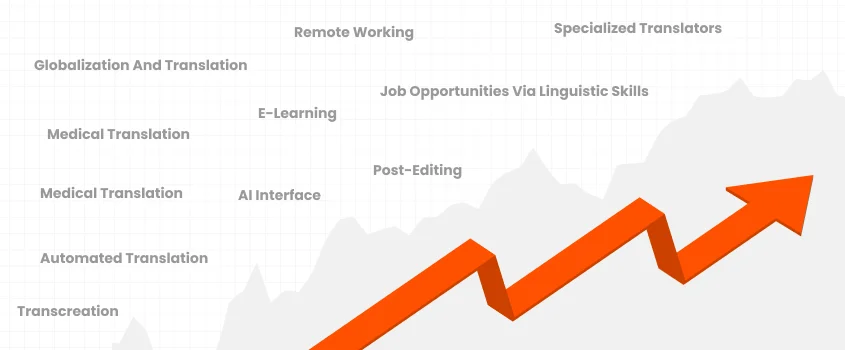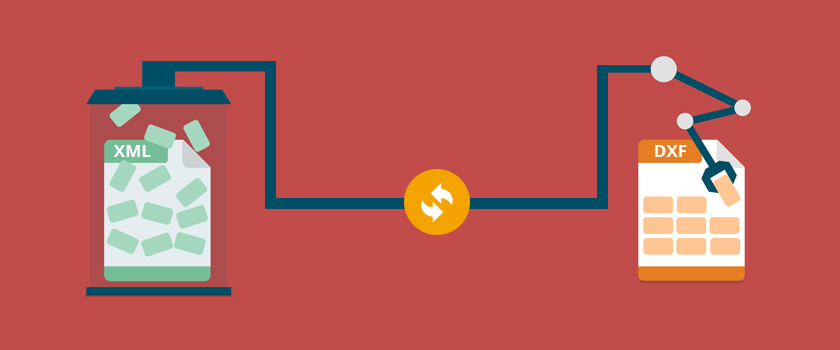How to Translate Ecommerce Website That Gets Results (2024)
By: Shahzad Bashir Posted on Fri, 16-02-2024

E-commerce is more like a juggernaut now. This industry has been rolling in dollars and billions of dollars are getting minted by them. The online stores these days are sprouting like mushrooms. They are offering everything from groceries, appliances, furniture, gadgets, medicines to experiences to education as well. All these e-commerce businesses are online by nature and they have their websites, applications, and software that are available. With technological advancements and a more connected world the lifestyle of a layman has also changed and shaped up for the better. People these days look for remote options to run their errands and this is where e-commerce businesses come at their disposal.
Shopping from the couch was what people in the old days used to fantasize about. Where you can compare prices with a click and can expect everything at your doorstep. Hence, due to e-commerce, it has become convenient to cater to people’s modern desires. Borders do not exist for e-commerce businesses. Consider Amazon as the world’s most popular e-commerce website that is operating in up to 50 countries spanning different continents and catering to diverse languages and cultures. E-commerce businesses and people are operating beyond borders. These businesses have opened the doors to new markets and customers. The innovation and AI shopping patterns have been traced and personalized and there are also recommendations according to the preferences of each shopper. This asks for the need for ethical practices.
Up to 26.5 million e-commerce websites exist globally. It is also interesting to mention that there was a massive and substantial increase in e-commerce businesses between 2019 to 2023, and the pandemic COVID-19 has been accredited as the driving force. It was the lockdown period that made entrepreneurs and people realize the need for remote and digital markets.
With the increasing number of e-commerce businesses, challenges also lurk. Competition has become fierce, and customer demands have been evolving since always. Security threats and private information often get leaked and exposed, penalizing people for extra money. E-commerce businesses are going beyond buying and selling. This has started to build communities, crafting experiences, and also has reshaped the shopping trends. The future of retail is evolving at a much faster pace now.
Before that, we move on to how to translate an e-commerce website. It is imperative to understand what an e-commerce website is.
Table of Content
What is an e-commerce website?
digital marketplace. It offers a virtual storefront in the vibrant online marketplace. This is the platform where you as an e-commerce owner can showcase your products and services that can help you connect to your customers. Moreover, you allow them to make purchases from the comfort of their homes and screens.
Here are the component features of an e-commerce website.
1. Product Catalog
This is a digital shelf. It asks for the display of offerings with enticing descriptions. These include high-quality images and relevant specifications and features.
2. Shopping cart
This is a significant part of an online e-commerce business website. It allows the customers to select their favorite items that they want to purchase. They make it before heading out to checkout. You as a customer can add the items and products that you like to your shopping cart.
3. Secure checkout
This stage of the e-commerce business website deals with the process of payments safely and securely. It is crucial to offer the clients a secure checkout to ensure that the payment details and information are safe with the e-commerce website. Also, they should offer various payment options for the convenience of the customers.
4. Customer accounts
The customer accounts start existing when they save their details. They can track orders, and also manage their shopping history. The customer won't have to enter their details every time they order from the same website.
5. Content pages
The content pages are an important part of the e-commerce website. These enable the essential information about the brand, policies, and contact details with the required FAQs. All these content pages are important and their translation into the relevant languages is also evident for a smooth experience for the shoppers coming from diverse backgrounds.
6. Search functionality
The search functionality also makes it easier and more convenient for the customer to look for the right product. You should ensure that you integrate all these details into your e-commerce website so that potential customers don’t leave your website empty-handed. An improved search functionality often goes well with the temperament of the shoppers.
7. Marketing tools
Marketing tools can help you with a better-ranked e-commerce website. Make sure that you integrate email marketing and social media buttons on your website. The targeted ads should also be in place to attract and engage potential customers.
Why does translation matter to e-commerce businesses/websites?
A business that is confined to a particular region due to its availability in one language can face many restrictions and constraints. This can cause turning away potential clients due to the language barrier. Nothing is more harmful than a misconception and misinterpretation. The surveys and research have made it obvious that customers are more inclined toward the websites and products that they find are available in their native language.
Moreover, as more as 67% of the people buying online claim that they look for comprehensive information about their required product before making a final purchase. English is a universal language and also the language of the internet; this is a well-known fact. However, do you know that around 75% of people do not understand this language? Therefore, translating your e-commerce business can empower you to rule over the world, that too with minimal expenses. In addition to marketing & advertising translations, it is also important to translate your e-commerce website.
A few reasons you should translate your e-commerce website have been listed below.
A better global presence
Who does not like to run a business that operates globally? E-commerce businesses in particular have the potential of being functional internationally. All these giant e-commerce businesses always work on the website and campaigns in the required languages to leave an impact. Global presence seeks more revenue generation.
Exploring global market potential
Translating the website into multiple languages opens a gateway of opportunities. They have vast international markets and multiplying the customer base and generating maximum revenue is the ultimate dream of every entrepreneur which you can only achieve when you hire a competent team of translators for your e-commerce business website.
Localize the experience
When you have a business to offer you need to consider certain aspects. You get to adapt your content and provide the details of the product descriptions in a way that resonates with the intended culture and practices. It is extremely crucial to build trust and establish an authentic and credible e-commerce business to win people’s trust.
Improve SEO
This is one of the important and main reasons to indulge in translation to improve SEO. You should be optimizing the website and adding localized keywords and content for better search engine visibility in target markets. This can attract more potential customers and improved SEO makes your website appear in the top searches fetching more clients and business.
Translating e-commerce business to get top-notch results
As we move towards how to translate the e-commerce website, you need to work on sound strategies and research the intended audiences that you are going to tap for your e-commerce business. E-commerce translation is not a robotic conversion of words from one language to another. However, you should be adapting the strategies and exploring new ways to skyrocket your sales.
Here are a few factors that you should consider for accurate translations and results.
Do you know your audience?
When you embark on the journey of e-commerce translation, you need to sort certain things out. Knowing your audience is one of the important factors. You should be conducting thorough research to understand their marketing norms. The cultural preferences and practices, buying habits, search behavior, and queries that they make to look for certain things and products. Analyzing the popular product categories and looking for the local competitors can also help to understand how e-commerce businesses work in your targeted regions.
People often take the translation as a practice of swapping words. Whereas when you adapt for the translation of your ecommerce business you need to go beyond literal translations. You should be adapting humor, the metaphors that they use, and the significance of those metaphors. Also, you should be resonating with the cultural references with the target audiences.
Working on currencies and units is extremely crucial to embrace while going through the translation of the e-commerce website. You need to convert the currencies and units. Make sure that you make it easy for the customers to understand the product purchase process followed by a seamless payment. The shipping costs should be conveyed in their local formats to avoid them being confused and astonished.
Optimize for search engines
Keyword research is one of the vital areas that you need to cater for an effective e-commerce website translation. You should look to find the relevant keywords in your target languages. This helps with the better optimization of the search engine. The local search engines and keyword research tools can help boost optimization. Moreover, the keyword research tools can be of great help for this purpose.
The website’s title tags, meta descriptions, and alt text should be placed with relevant and better keywords. This allows an improved search and visibility of the website. A website that gets ranked on the first page can have more potential for sales as compared to one that is not available on the first page. People usually don’t go to the second or third pages and look for top results while making their search.
Remember that SEO is crucial to driving organized traffic to your online store. This also needs careful consideration while working on multiple languages for the e-commerce website. A right and effective multilingual SEO strategy can engage qualified traffic and increase sales in foreign markets. You should ensure that you perfectly localize the content. Translating the product descriptions, blog posts, and additional content helps cater to the local search intention and their preferences.
Enhance user experience
It is imperative to be mindful of certain factors while translating e-commerce businesses and currency conversion is one of them. The currency conversion tools should be checked properly and there should be no glitch. Also, the display prices and checkout totals should show up in local currencies with exact and accurate conversion rates. The payment gateway integration is extremely crucial to accomplish. This is particularly evident in offering a familiar and secure payment option for the target audiences.
The shipping and return policies are also vital to translate. These require translating the content and also making adjustments to the shipping and return policy accordingly. This is to match and comply with the local rules and regulations that people practice there. Going against the market norms or violating the rules can be disastrous and can make your business stop even before flourishing.
Moreover, when it comes to enhancing the experience, you should be aware of the fact that people often stay active on their gadgets. They have ipads, mobiles, and cellular devices. Therefore, your website should be supporting the mobile versions as well. Make sure that the checkout process and websites are mobile-friendly. These should be optimized for mobile devices. This is extremely vital for the international markets especially.
Build trust and transparency
On an e-commerce website building trust and transparency is extremely crucial. You should ensure that your website is a go-to website for the clients that they trust you and you do not appear as a scam to them. There should be a proper translation of the legal content, documents, and return policies. The potential client should find everything right away. Providing every required information can help with customer relations that are worthy, reliable, and long-lasting.
The website should always contain a Contact Us page where there are contact details. There should be proper information about the contact number, email address, and physical address of your business. This page should offer the local phone numbers. A live chat support program can also help to have smooth custom relationship management.
Encourage and motivate your customers to provide product reviews and testimonials. This is to build trust with the clients. This can also enable you to be in the good books of the international customers. An e-commerce website that comes with all the strategies to give an authentic experience can get popular in no time. Translation in all important languages and offering a multilingual website pattern can help with better experience.
Wise use of technology
Machine technology and translation tools have improved a lot. A smart use of machine translation tools can help with e-commerce website translation. You should utilize the machine translation tools for the basic content, however, make sure that human editors and translators take care of that post content.
Translation management systems are being integrated these days. You should streamline the translation process with the platforms that manage workflows, glossary terms, and version control. Managing things becomes quite smooth with the help of TMS. They have unique features of translation memory, terminology management, and other features.
The petty translation tasks that the writers initially used to worry about are no more their pain and TMS can take care of these for the team and writers. Don't overlook the need for testing of the translated version. You as an e-commerce business owner should integrate different localization strategies. Tracking the website traffic, conversions, and customer feedback is critical to providing consumers with a pleasant online shopping experience.
Why to seek professional translation services?
Translating an e-commerce website is a hectic and challenging process. This can get interesting and turn into people’s go-to virtual place to buy and make purchases if you professionally translate the content. Make sure that you do not ruin the whole process by relying on machine tools or hiring incompetent translators. You should make smart decisions and choose an experienced professional who has expertise in your niche and the target languages. Make sure you collaborate with native speakers and conduct your research among the targeted audiences to check how they like their e-commerce market. Involve the native speakers in the translation and this can also help with reviewing the translation process to ensure cultural accuracy and language flow.
The best way is to invest in professional eCommerce translation services. Try Mars Translation. We have a professional team of translators who are native speakers of their respective languages.
Last but not least, you should not get impatient and need to be tolerant. It is an ongoing process. Monitoring the translated website is a constant job. You should optimize the translated website based on user feedback and performance data. The whole process asks for constant effort and contribution.
Conclusion
E-commerce businesses have become of paramount importance. E-commerce businesses have particularly taken over post covid. This has also stimulated the need for translation of e-commerce websites. The important features of an e-commerce website include a product catalog, shopping cart, secure checkout, customer accounts, content and marketing tools.

Finland is a beautiful country in Northern Europe. It is famous for its woodlands that make it the most densely
Read more
If you are an avid internet user (which you most probably are, you must be aware of the popular myth
Read more
To get success in every aspect of life, communication is very important. Do you want to impress people with your
Read more
Africa is the second largest and second most populous continent. As recent statistics suggest, 1,486,275,887 is the current population of
Read more
dxf: DXF is a CAD data file format developed by Autodesk for CAD data exchange between AutoCAD and other software. docx:
Read more
Mars Translation can help you extract the texts in a DXF file and convert them into a XML file so
Read more
Mars Translation can help you extract the texts in a DWG file and convert them into a Word file so
Read more
No state on the western side of the globe can compare the strategic geographic location, diverse multilingual workforce, and attention
Read more
San Diego is California's second-largest city, and it has a population of 1.3 million from which three million residents are
Read more